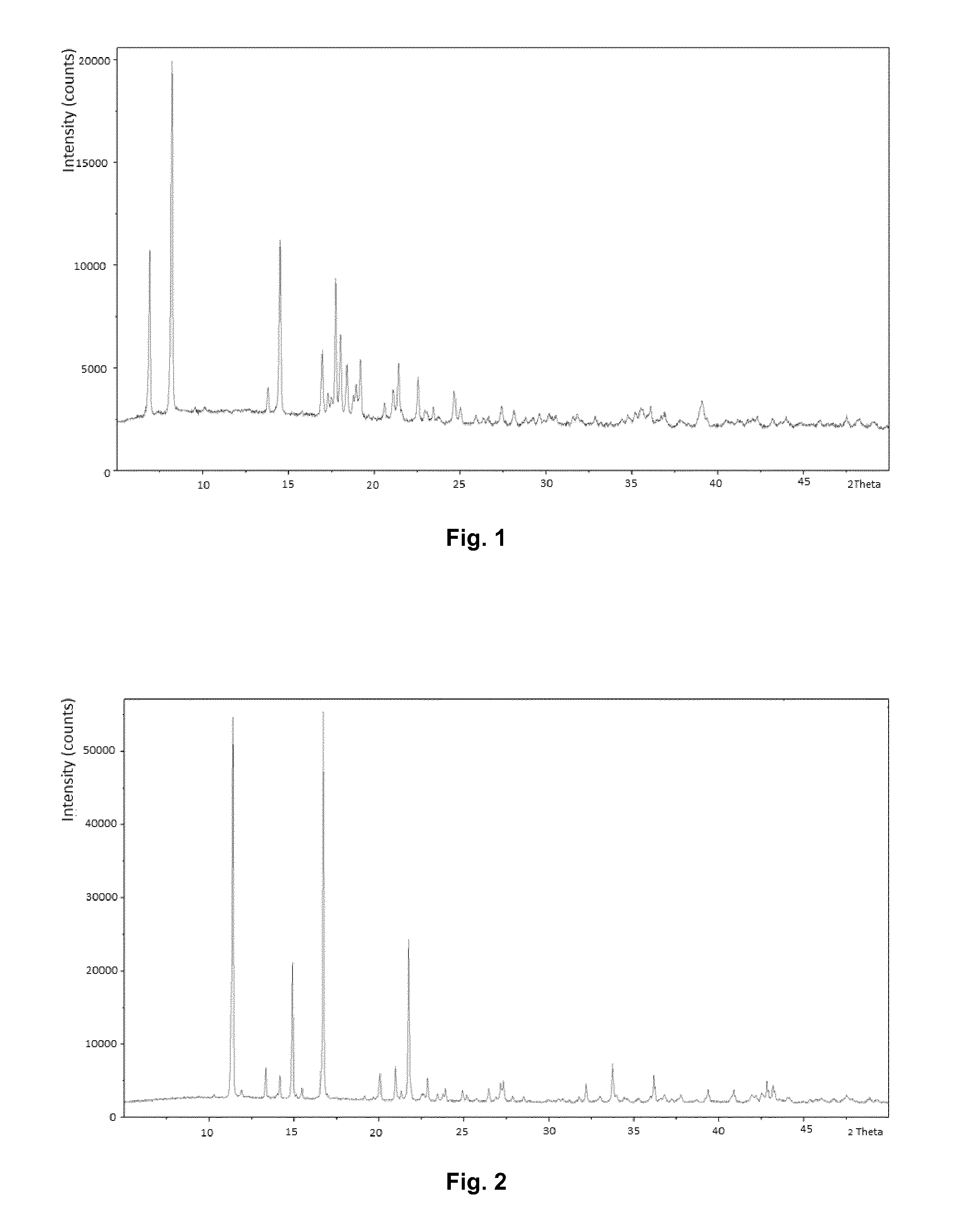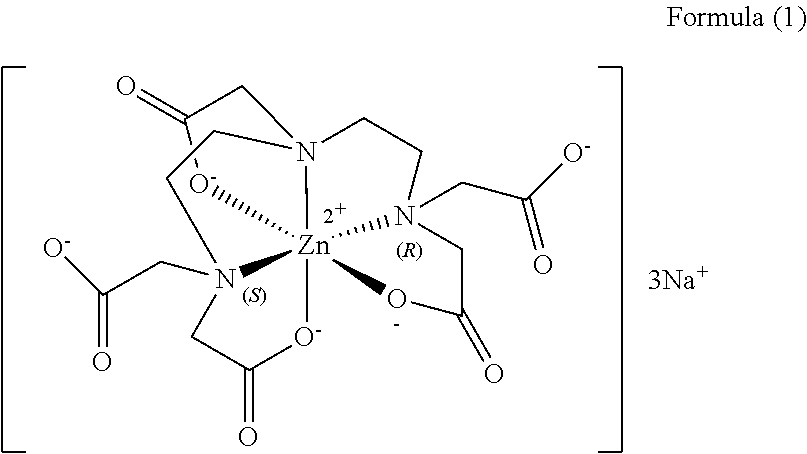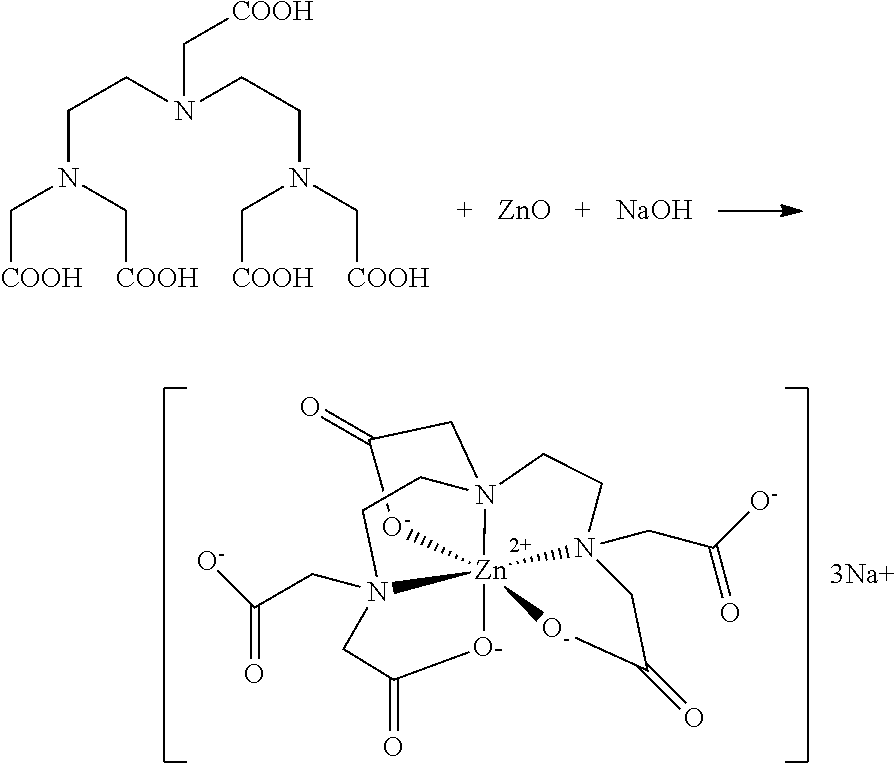Crystalline forms of zinc trisodium pentetic acid
a technology of trisodium pentase and zinc trisodium pentase, which is applied in the field of crystalline forms of zinc trisodium pentase, can solve the problems of amorphous products, and high physical properties of active ingredients used for oral administration, and achieves high physical properties of active ingredients. , the effect of high physical properties
- Summary
- Abstract
- Description
- Claims
- Application Information
AI Technical Summary
Benefits of technology
Problems solved by technology
Method used
Image
Examples
example 1
Preparation of Amorphic Zn-DTPA 152.5 g of NaOH were dissolved in 1.7 L of water and the solution was cooled to 30° C.
[0076]Subsequently, 500 g of DTPA were added with stirring and the mixture was stirred until a clear solution formed (about 20 min) 103.4 g of zinc oxide were added to the solution and the solution was stirred overnight until a clear solution resulted.
[0077]The pH was adjusted to 7.0 with a 10% NaOH solution and the solution filtered. The solution was then concentrated at 40° C. under vacuum with vigorous stirring and dried at 90° C. at 2.5 kPa for 17 hours.
[0078]This gave 641.1 g, corresponding to 96.5% of theory. Purity by HPLC: 99.6%; water content: 7.16%.
example 2
Preparation of Crystalline Zn-DTPA Form I
[0079]296 g of NaOH were dissolved in 3.4 L of water and the solution was cooled to 30° C.
[0080]Subsequently, 1 kg of DTPA was added with stirring and the mixture was stirred until a clear solution formed (about 20 min) 207 g of zinc oxide were added to the solution and the solution was stirred overnight until a clear solution resulted
[0081]The pH was adjusted to 7.01 with a 10% NaOH solution and the solution filtered. The solution was then concentrated at 40° C. under vacuum with stirring and 3.2 L of methanol added. The solution was again concentrated such that 3 L of liquid were distilled off. Another 2 L of methanol were added, such that a solid crystallized out. The crystals were filtered off and dried at 90° C. at 2.5 kPa for 17 hours.
[0082]This gave 812.4 g, i.e. 61.14% of theory. Purity by HPLC: 99.6%; water content by Karl Fischer: 5.49%.
example 3
Preparation of Crystalline Zn-DTPA Form II
[0083]In an apparatus with water separator, 296 g of NaOH were dissolved in 3.4 L of water and 1 kg of DTPA was added with stirring. 207 g of zinc oxide were added and the pH adjusted to 7.0. 1 L of n-butanol was added to the suspension and the solution heated with removal of water (azeotropic distillation) until crystallization occurred. After cooling of the reaction solution the crystalline product was filtered off.
[0084]Drying the product at 90° C. at 2.5 kPa for 17 hours gave 1.3 kg, corresponding to 100% of theory; content by HPLC, 101.6%, water content: 8%.
PUM
| Property | Measurement | Unit |
|---|---|---|
| air humidity | aaaaa | aaaaa |
| boiling temperature | aaaaa | aaaaa |
| relative air humidity | aaaaa | aaaaa |
Abstract
Description
Claims
Application Information
 Login to View More
Login to View More - R&D
- Intellectual Property
- Life Sciences
- Materials
- Tech Scout
- Unparalleled Data Quality
- Higher Quality Content
- 60% Fewer Hallucinations
Browse by: Latest US Patents, China's latest patents, Technical Efficacy Thesaurus, Application Domain, Technology Topic, Popular Technical Reports.
© 2025 PatSnap. All rights reserved.Legal|Privacy policy|Modern Slavery Act Transparency Statement|Sitemap|About US| Contact US: help@patsnap.com



